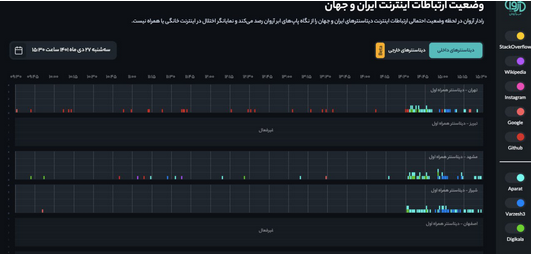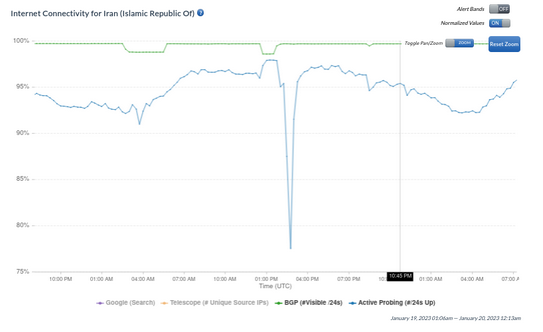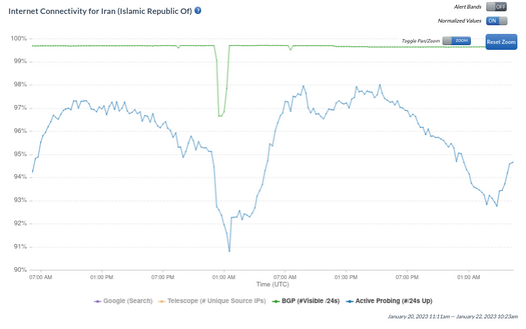The start of 2023 was marked by yet another month of internet disruptions, which includes a major disruption observed at the Tehran Internet Exchange Point (IXP) starting on 18 January. Its cause remains unclear.
The Tehran IXP center was launched in July 2013 in the Imam Khomeini Telecommunication Complex of the Telecommunication Infrastructure Company (TIC). The government-owned TIC provides telecommunication infrastructure to all ISPs and also controls all international gateways in Iran. The center was set up following the announcement of the policy to separate local and international traffic.
IXPs allow Internet Service Providers (ISPs) to exchange data destined for their respective networks. In other words, the role of IXPs is to reduce the portion of an ISP’s traffic that must be delivered. With respect to Iran’s infrastructure and the architecture of the National Information Network (NIN), IXPs play an important role in distributing traffic inside the country and preventing the use of international IXPs.
It appears that some recent changes have been made at this IXP center with the aim of advancing the separation of local and international traffic following months of severe internet restrictions and mobile data curfews
The issue began when those monitoring internet connectivity in Iran observed disruptions at the center through publicly available data provided by the IXP’s website. While these issues impacted services, they did not not necessarily disrupt end-user access

The cause of this disruption is unknown especially in the absence of any information or an explanation from Iranian officials. Additionally, since the Tehran IXP’s website became a popular source for network monitoring by the general public and journalists, the government has taken down the website.
However, by the end of January, the TIC issued a technical document to all providers or companies connected to the Tehran IXP and ordered them to follow specific instructions to avoid any future issues. However, still no explanation was provided on the cause of the disruptions.According to a report by Karang Weekly on 30 January, this is the first time that such documents have been issued to ISPs and those who are connected to Tehran IXP.
Notable Disruptions:
- 5 January: According to IODA data, there was an internet disruption across the country on this date, however, officials did not provide an explanation about the disruption.
- 8 January: According to IODA data, there was an internet disruption across the country on this date, however, officials did not provide an explanation about the disruption.
- 17 January: On this date at 15:30 local time, Arvan Cloud’s Radar showed major disruptions on local traffic. According to a statement by Arvan Cloud “frequent power outages at the company’s data center in the morning caused some disruptions and non-provision of services from the company’s side.“

- 19 January: In recent years, planned internet shutdowns during university entrance exams have become common, which the government justifies as means to prevent cheating during the exam. This year, a day prior to the exam, questions were leaked online via Telegram channels.
- 21 January: According to IODA data, there was an internet disruption across the country on this date, however, officials did not provide an explanation about the disruption.
- 25 January: On this day, the country experienced an extensive disruption for around 10 minutes. Although the shutdown was confirmed by the Iranian authorities, they did not confirm the cause of the disruption, stating that the incident was being investigated.
- 29 January: According to IODA data, there was an internet disruption across the country on this date, however, officials did not provide an explanation about the disruption.










